Dhanteras Rangoli
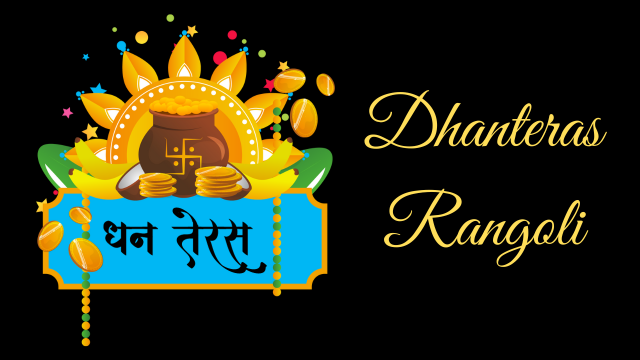 |
| Dhanteras Rangoli |
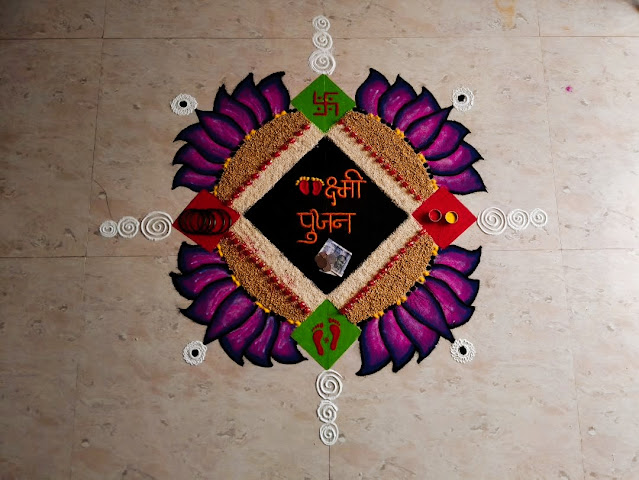 |
| Beautiful Dhanteras Rangoli |
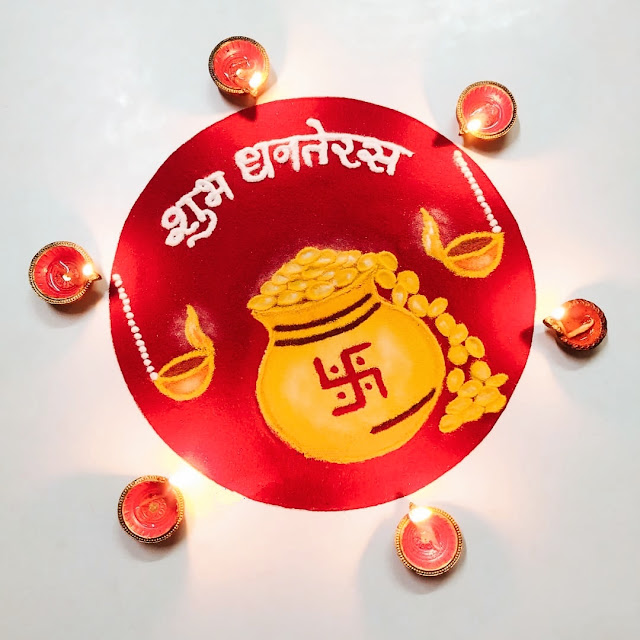 |
| Dhanteras Ki Rangoli |
 |
| Dhanteras Rangoli Design Easy |
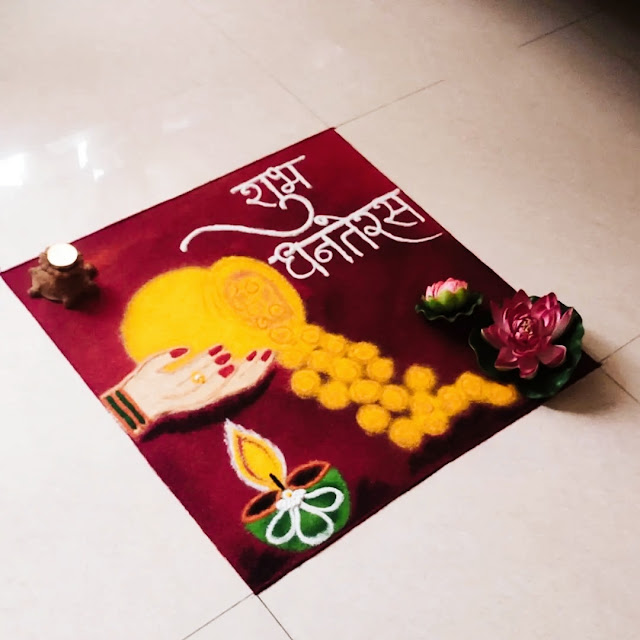 |
| Dhanteras Rangoli Design |
 |
| Dhanteras Rangoli Designs |
 |
| Dhanteras Rangoli Easy |
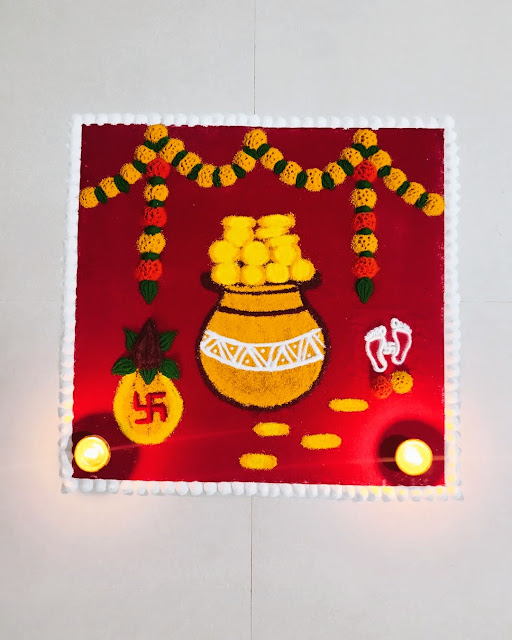 |
| Dhanteras Rangoli Image |
 |
| Dhanteras Rangoli Images |
 |
| Dhanteras Rangoli New Design |
 |
| Dhanteras Rangoli Photo |
 |
| Dhanteras Rangoli Simple And Easy |
 |
| Dhanteras Rangoli Simple |
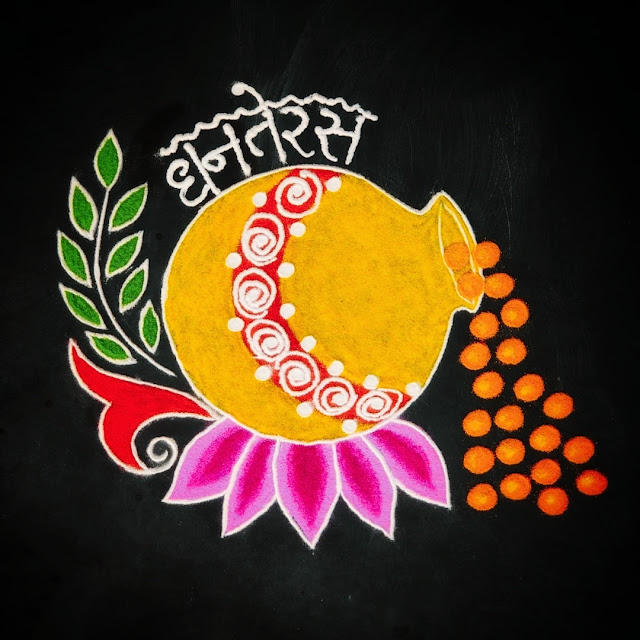 |
| Dhanteras Rangoli |
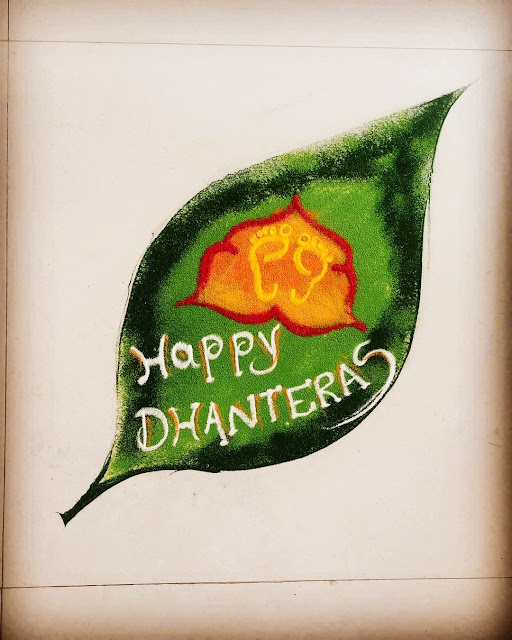 |
| Easy Dhanteras Rangoli |
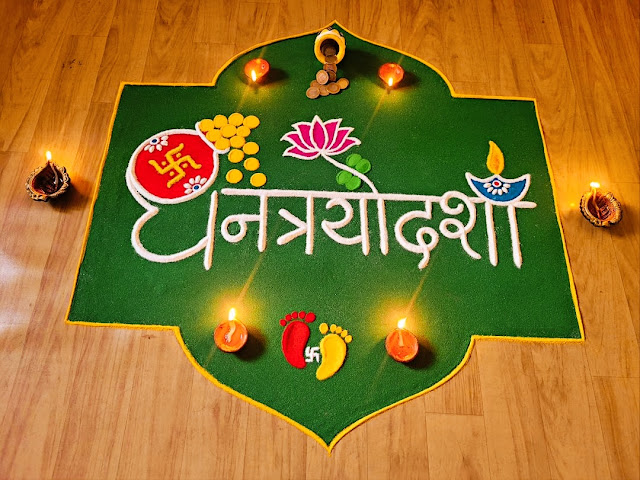 |
| Happy Dhanteras Rangoli Design |
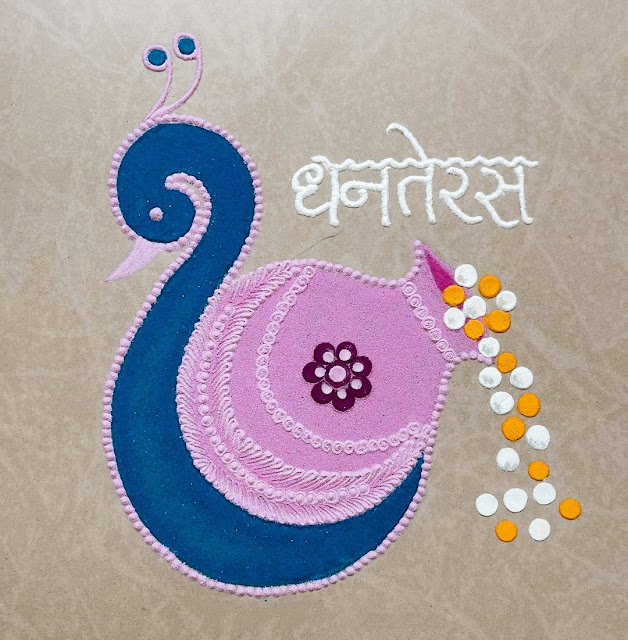 |
| Happy Dhanteras Rangoli |
 |
| New Dhanteras Rangoli |
 |
| Rangoli Design For Dhanteras |
 |
| Shubh Dhanteras Rangoli |
 |
| Simple Dhanteras Rangoli Designs |
 |
| Simple Dhanteras Rangoli |
Why is Rangoli Made?
What is The Meaning Of Rangoli - Any shape made of colors or color made of colors + oli becomes Rangoli.
It is said that the history of Rangoli is very old, it has been being made not since today but since the time of Harappa and Mohenjodaro. Time changed and so did the form of Rangoli, today Rangoli is made in different ways in different states of our country India.
The feeling of making it is the same but the method is different, and yes its name is also different.
Some call it Alpana, some Kolam, and some even Chowk Puran. The square is filled with flour.
Making Chowk is called Chowk Purna, it is made from flour,
In Bengal, Rangoli is called Alpana, it is made from rice flour.
I think the reason behind using food items like wheat flour or rice flour in Rangoli might be that even if unknowingly, we also give food to small animals.
Because this rice and wheat flour can be eaten by ants or small insects.
Today, there has been a lot of change in the form of Rangoli but the colorful Rangoli made of stone powder which has been prevalent for years is liked by all of us.
History of Rangoli
Pictures matching with Alpana are seen in the remains of Mohenjodaro and Harappan civilization.
Rangoli is also called Alpana. This word is found in Sanskrit. ,
Which is called the Olympics. Olympan means “to coat”.
In ancient times, it was believed that there was always prosperity in the house and city where beautiful pictures and colorful rangoli were made.
Even today this practice is followed in villages where rangoli is made outside the house.
Importance Of Rangoli
Rangoli is an integral part of our Hindi civilization. Be it any puja or any auspicious work, Rangoli is made with great love.
Everyone knows that the next day after making Rangoli it will get washed or spoiled, yet it is made with great heart.
If puja is performed at home, tables are made around the sacrificial altar.
Different types of shapes are made in Rangoli like lotus, Kalash, symbols of God.
Rangoli is made by coating the ground with cow dung. Rangoli is made at every Teej festival or any function at home.
Mainly during the time of Diwali, you will find Rangoli decorated outside every house. Be it children or adults, you will find everyone decorating their house and courtyard.
Nowadays, different types of rangoli are made like colorful rangoli made by grinding stones or rangoli made with colorful flowers.
Nowadays it is also being used in Rangoli, in which Rangoli is made even under water.
Vandana Joshi, a resident of Nagpur, achieved a unique position for herself by making rangoli underwater for the first time in 2004 and got her name registered in the “Guinness Book of World Records”.
Different Types Of Rangoli
- Alpana
- Aripan
- Aipan
- kolam
- Mugu
- Mandana
- Chowk Puran
Alpana Rangoli:- Alpana is an art made with different colors which is also called Rangoli.
It is especially made in Bengal and South India.
It is made from dry natural colors for marriage or any auspicious occasion. Alpana mainly has geometric shapes, through these the figures of Gods and Goddesses are made in it.
To make it, rice solution, dried leaves solution, and charcoal powder are used.
Aripan Rangoli:- This is an artwork made in Bihar, it is made on the walls of the courtyard.
It is also made from rice, the rice is soaked for hours and then it is ground in a cob and a thick solution is made from it, which is called Pithora.
We can make shapes using our fingers.
Kolam Rangoli:- This is a rangoli made in Tamil Nadu and Kerala in South India.
Rice flour is also used in this and flowers are also used.
It is also called Pookolam and is made during the main festival of Onam in Kerala.
There is also a very interesting method of this, the festival of Onam lasts for 7 days, on the first day of the festival a small figure is made from flowers and in the next 7 days it is given a bigger shape with the help of other people.
In these, such flowers are used which do not wither quickly like marigold, rose, jasmine, etc. Their leaves also do not dry quickly due to which this rangoli can last for a long time.
Mugu Rangoli:- Like other states of India, in Andhra Pradesh too, artwork is made with rice flour outside the homes early in the morning.
The reason behind using rice flour in this is that birds, ants, or small creatures can eat it and we can also give it to others and thank God for what God has given us.
This artwork is made by plastering cow dung on the ground, it is said that cow dung also protects us from many diseases.
But in today's time, a little change has been made in it, now it is made from calcium or chowk powder.
The color of the ground becomes darker due to cow dung and the shape made with white powder emerges beautifully.
Mandana Rangoli:- Mandana is an artwork of Malwa, Rajasthan, and Niwar, it is also made on the ground and on the wall.
In this, geometric shapes like triangles, quadrilaterals, the base of the chess board, curved lines, flowers, and leaves are made.
The most popular shape in this is a hexagon which is made by dividing it into two triangles.
It is said that it is an image of Goddess Lakshmi, the main subjects in it are socially celebrated customs and rituals.
To depict the Teej festival. Mandana is made during Diwali or at the time of harvesting of crops.
Chok Purna:- It is made in homes in North India.
Chok Puran would mean the empty part of the house to which the entire house is attached.
Puran means to decorate it, that is, to decorate the central part of the house for auspicious work in the house.
From the birth of a child to marriage, in every Teej festival, the square is completed, and women sing songs while making it.
How To Make Rangoli
Rangoli is mainly made in two types
- free hand
- Bindi wali
Freehand – Any shape can be made in it, be it a flower strip or any personal figure. Nowadays, rangolis with very beautiful pictures are made.
Dotted – In this, some limited points are marked and then a shape is made on them. Kolam is also a type of it.
Sticker Rangoli – Nowadays ready-made Rangoli stickers are also available in the market which we can stick directly on the ground.
Eco-Friendly Rangoli - Nowadays, there is a trend of making eco-friendly rangoli, in which we use flowers and the next day we put these flowers in compost so that new flowers can grow.
Whatever the form of Rangoli, it enhances the beauty of the house, that is why it is such an integral part of our culture.
Scientific importance of Rangoli:- Before making Rangoli, the ground is smeared with cow dung, due to which mosquitoes and insects do not enter the house.
To make Rangoli, we use our fingers, due to which the Acu pressure points of our body become active.
The effects of colors affect our lives and make us energetic.
Eco-friendly rangoli which is made from flowers, we can use these flowers to make compost.
In daily life, when Rangoli is made in the morning, it also becomes a kind of subtle exercise.
Final Word
My dear friends, I hope you liked this post of ours. If you liked this post of ours, then do share our post with your friends. And share on social media. And let us know in the comments how much you liked the post. Don't forget to comment.


![5555+ WhatsApp DP Images 2025 [ New & Stylish WhatsApp DP ]](https://blogger.googleusercontent.com/img/a/AVvXsEg95BfLEowtFnLtY0Il-OSnzA76svLtx8rt7iXrP02lzt0U-y2AHvAhQFdIMHg97mkNEBk6mB9z2cDEusvytmRIYatQLaGhPeZbmVKP0hTcPe2dxRSKw9LydaR2N3t5TOrDor018-2ttJcGzBUgjgqO4mU_pxF-2gw4zEAZ4tWQNydtUyrGsYH6CVrZ=w680)




0 Comments
If You Have Any Doubts. Please Let Me Know.